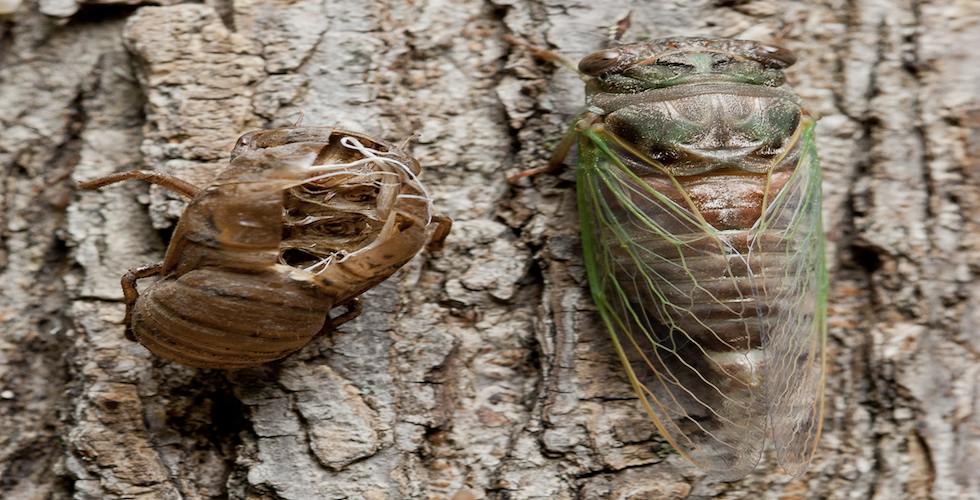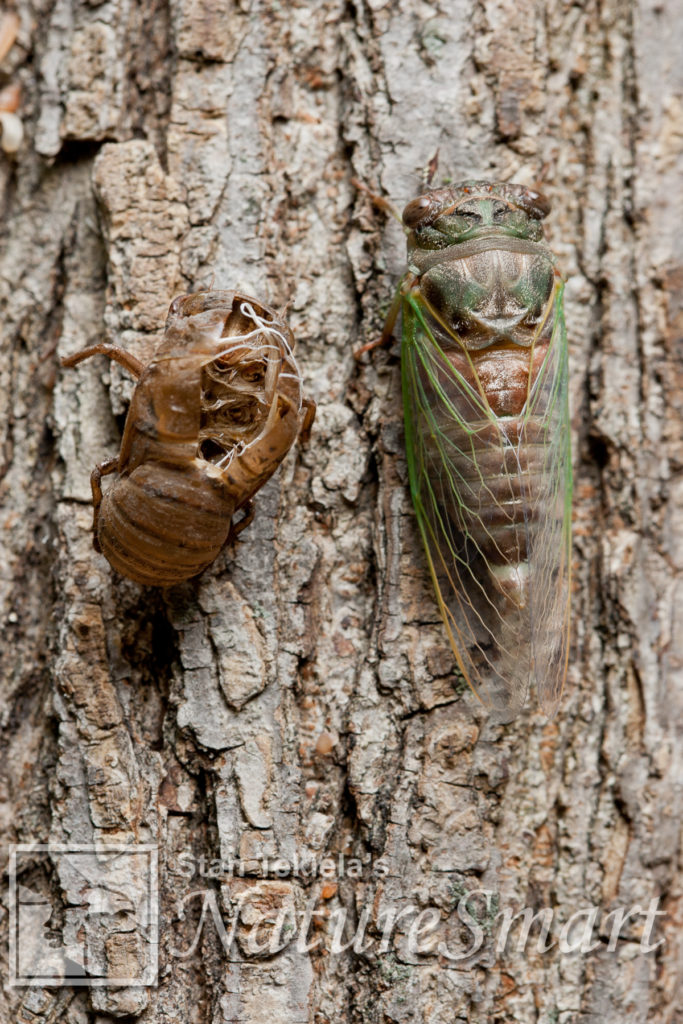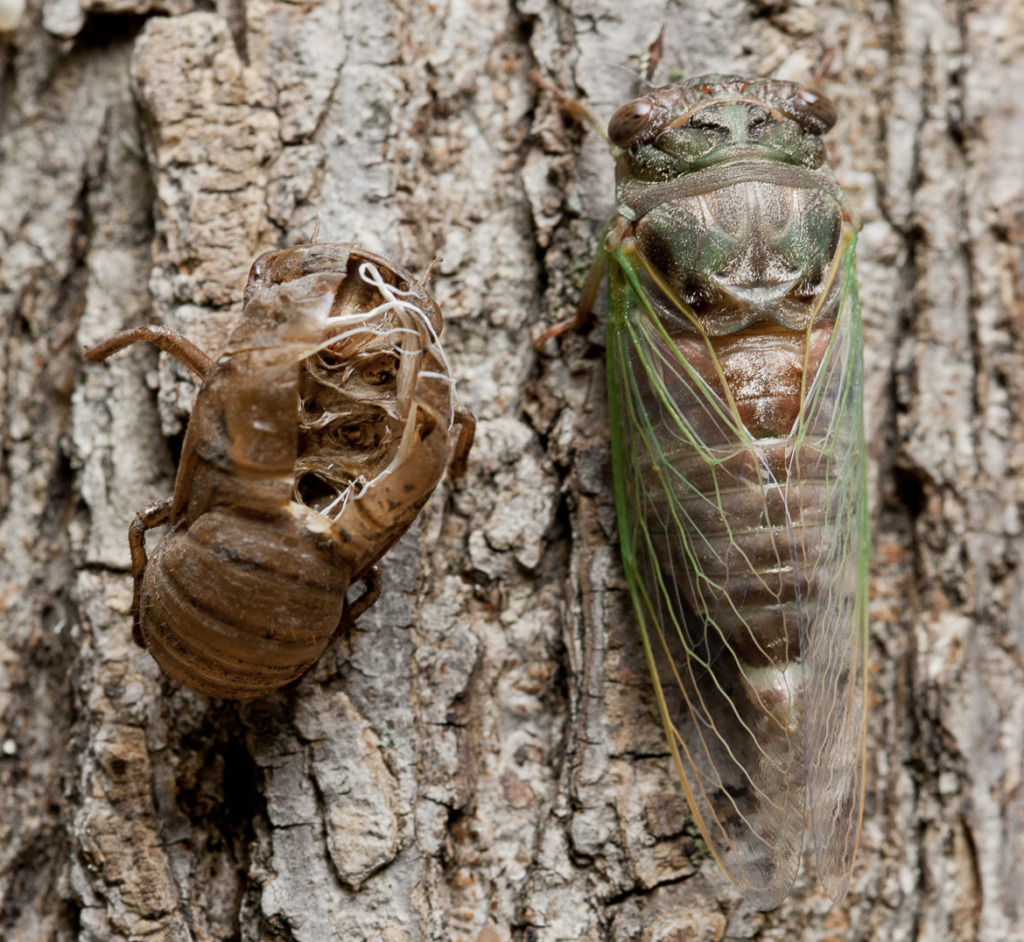
Taking a Look at Cicadas, the Murder Victim of Killer Wasps
A little while ago Stan Tekiela wrote about the Cicada Killer Wasp, an extraordinarily large wasp that kills Cicadas to feed its offspring. The article sparked interest in insects in general—and specifically in Cicadas. So, let’s take a look at the murder victim.

Cicadas are a common summertime insect, but most people haven’t seen one. However, just about everyone has heard the loud buzzing sound of Cicadas coming from the tops of trees starting in midsummer. Only the male makes the buzzing sound to attract the female. His call is so loud, the male needs to turn off his ear, called a tympana, so he doesn’t damage his own hearing. Some North American Cicadas have been recorded at levels well over 100 decibels. That’s loud enough to damage the human ear!

There are nearly 200 different kinds or species of Cicadas in North America and nearly 4,000 species worldwide. At least one kind of Cicada is found on every continent except for Antarctica.
Cicadas are large insects with nearly 2-inch-long, clear membranous wings that carry them from treetop to treetop. While most insects, such as crickets and katydids, use their wings or legs to make sounds, Cicadas have a large hollow section of their abdomen that vibrates like a drum to make their specialized and extremely loud call. Each species of Cicada has its own unique sound/song, which ranges from a loud continuous buzz to a pulsating buzz. Either way, it’s loud. Some species of Cicada call in a frequency so high that you and I cannot hear it at all.
Once the male Cicada attracts a prospective female, the two have a treetop rendezvous. After the lofty encounter, the female Cicada moves to another tree to find small dead twigs where she will inject her eggs into tiny slits and cracks in the dead branches. She can lay upwards of 600 eggs with a specialized needle-like appendage called an ovipositor.
The eggs hatch into small bug-like nymphs in about 6 to 10 weeks that purposefully fall to the ground and land unharmed. Each nymph then burrows into the ground underneath the tree, where it begins to feed on the roots and sap of the host tree.
The nymph carries on this subterranean life for many years before emerging. The Periodical Cicada (Magiciada spp.) emerges only once every 13 or 17 years. They come out by the tens of thousands, which usually attracts the attention of the local media because it is such an unusual sight. These are some of the longest living insects on the planet.

The more common varieties of Cicada emerge every 1 to 3 years, which means we have at least one species of Cicada every summer to serenade us. No matter how long they spend underground, newly emerged nymphs climb the nearest tree or vertical structure, attach themselves, and split open the skin on their back. The winged adult Cicadas emerge and climb to the top of the trees to announce that another summer is at hand.
Cicadas are often incorrectly called locusts. The term locust is reserved to describe the times when the ordinary grasshopper becomes overpopulated and starts to cause crop damage.
If you enjoyed Stan’s post, you may consider one of his amazing nature books: Majestic Eagles; The Lives of Wolves, Coyotes, and Foxes; or Backyard Birds: Welcomed Guests at our Gardens and Feeders.
You can follow Stan on Facebook and Twitter, or contact him via his web page. Stan’s nationally syndicated NatureSmart Column appears in more than 25 cities spanning 5 states (Minnesota, Wisconsin, Michigan, Illinois, and Pennsylvania) and is circulated to more than 750,000 readers.
For more stories about wildlife and nature, sign up for our newsletter now!


